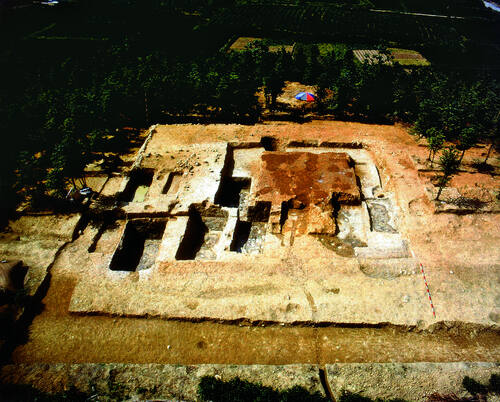Rituals and Sacred Spaces
- Zoeanna Upadhyay

- Jun 19, 2021
- 3 min read
Zoeanna Upadhyay
We live in a world of manifest phenomena, but it is the non-manifest that gives our life meaning. Since the beginning of time, humans have sensed that reality is more profound than the manifest world [1]. Through art, music, philosophy and religion people have tried to communicate the phenomena they experience [2], but cannot necessarily see or touch.
We need to feel connected to the divine to make sense of the world, and to find order in the universe. Architecture is, and has always been a way for humans to articulate this. It is a manifestation of our beliefs, our self-awareness, our striving towards perfection and our connection to the universe. It is "a bridge" that connects us to these experiences[3].
Death is one such phenomenon that falls in the realm of the unknown, the unknowable, the mystical. We do not fully understand it. But it is central to our timeless quest to find meaning. I think this is why the sacred and our spaces of death are so closely linked. Across all cultures, traditions and contexts it is something we have in common; we build temples for the same reason we build shrines-to bring a sense of the ineffable into our lives.
The sacred comes together with death in different ways across history. In the Archaeological ruins of Liangzhu City in China, the Yaoshen site (3300-3100 BCE). The site, about 25 square meters is surrounded by a ditch and contains 12 graves arranged in rows. It also contains the Yaoshan Altar, which may have been a sacrificial site or some kind of ancestral worship platform[2]. This shows us the close relation between death and religion.

This is also seen in the ancient city of Ur, where Ziggurats (religious structures) were built in the same complex as cemeteries (sites of the dead). In Egypt, the pyramids were massive tombs to help Pharaohs in the 'afterlife'. 'The book of the dead' and paintings illustrate the ritual practices of the Egyptians associated with the dead [2].
In many ways, spaces of ritual are similar across different places and religions. They adapted many of the same elements- the Greeks and Romans used similar columns, statues, and ornamentation in their temples [4]. They were often built on Sacred Mountains, like the Acropolis in Athens and the Buddhist Buseoksa temple in Korea. They used sacred geometry to model the cosmos- the Stonehenge used circles to mark the sun path while Hindus and Buddhists used Mandalas as patterns symbolic of the universe. The Greeks, on the other hand used 'the Golden Ratio' in their architecture, which is believed to be a recurring constant in nature. There are also different symbols that manifest into the architecture, like the cross in Christianity and the Swastika in Hinduism [2].
Fig 1- Acropolis in Athens
These similarities appear across history, and they always adapt to different contexts, times, religions, geography and climate. As the above examples illustrate, the pervading beliefs of the people play the ultimate role in influencing the differences in sacred and ritual Architecture.
References
[1]. Correa, C., (2010), The Public, the Private and the Sacred, a Place in the Shade - the New Landscape and other Essays, (New Delhi: Penguin Books).
[2]. Marcello, F., 2020, 'Ritual 1,2,3,4 and 5', Learning Material on Canvas, Swinburne University of Technology, 15th of March 2020
[3]. Unwin, S. (2003). Analysing Architecture. Taylor & Francis Routledge.
[4]. Palladio, A(1997) The four books on architecture. Trans. R. Tavernor & R. Schofield, MIT Press, Cambridge.






Comments